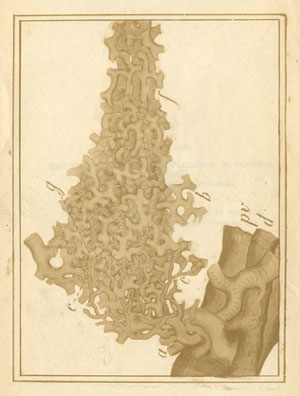
London : John Churchill, 1856.
Description : [i-ii], front., [iii]-xx., 13 l.s, 80 p., 32 p. adv. ; ill., 14 plates, 23 cm.
Photographs : salt prints ; front. & 25 photos on 13 leaves.
Subject : Anatomy, Histology.
Cited :
Taureck, Renata, Die Bedeutung der Photographie für die medizinische
Abbildung im 19. Jahrhundert (1980) ; p. 198 :
This book contains 66 photographs [figures] from drawings — here the photograph is being used purely as a reproduction technique, a procedure which in his work "How to work with the Microscope" 1 published in 1861, Beale praised as extremely useful when only a few examples are required. Consequently, he used the photograph as an alternative to engraving or other means of reproduction ; for him, photographic representations of microscopic objects were not yet applicable. Not until 1868 did he recommend photography for precise representations of microscopic objects.
Notes :
Beale's many innovations of slide preparation furthered the understanding of anatomical structures through microscopy. He was also an early advocate of photography and wrote about his dedication and struggle as an amateur photographer in the preface to this book on the liver.
Fig. 1. FRONTISPIECE. — Plan of the arrangement of tissues in a lobule of human liver :

1 When only few copies of a work are required, the researches may be very
cheaply illustrated by taking photographs of drawings. A large drawing
of the object must first be made in the manner described in [section] 45.
From this a negative reduced to the proper size is taken, from which any
number of copies may be obtained. In this manner I have illustrated my
memoir on the anatomy of the liver with upwards of sixty illustrations.
("The Anatomy of the Liver, 1856.") The results were not so
satisfactory as they might have been, but as all the prints were prepared
at home with very limited appliances, very good prints could not be
looked for. When many copies of a work are likely to be required, this
mode of illustration is not applicable, as the original cost of engraving
would soon be covered; but when only a few copies of a great
number of drawings are wanted, this plan possesses decided advantages.
---From How to Work with the Microscope, third edition.
